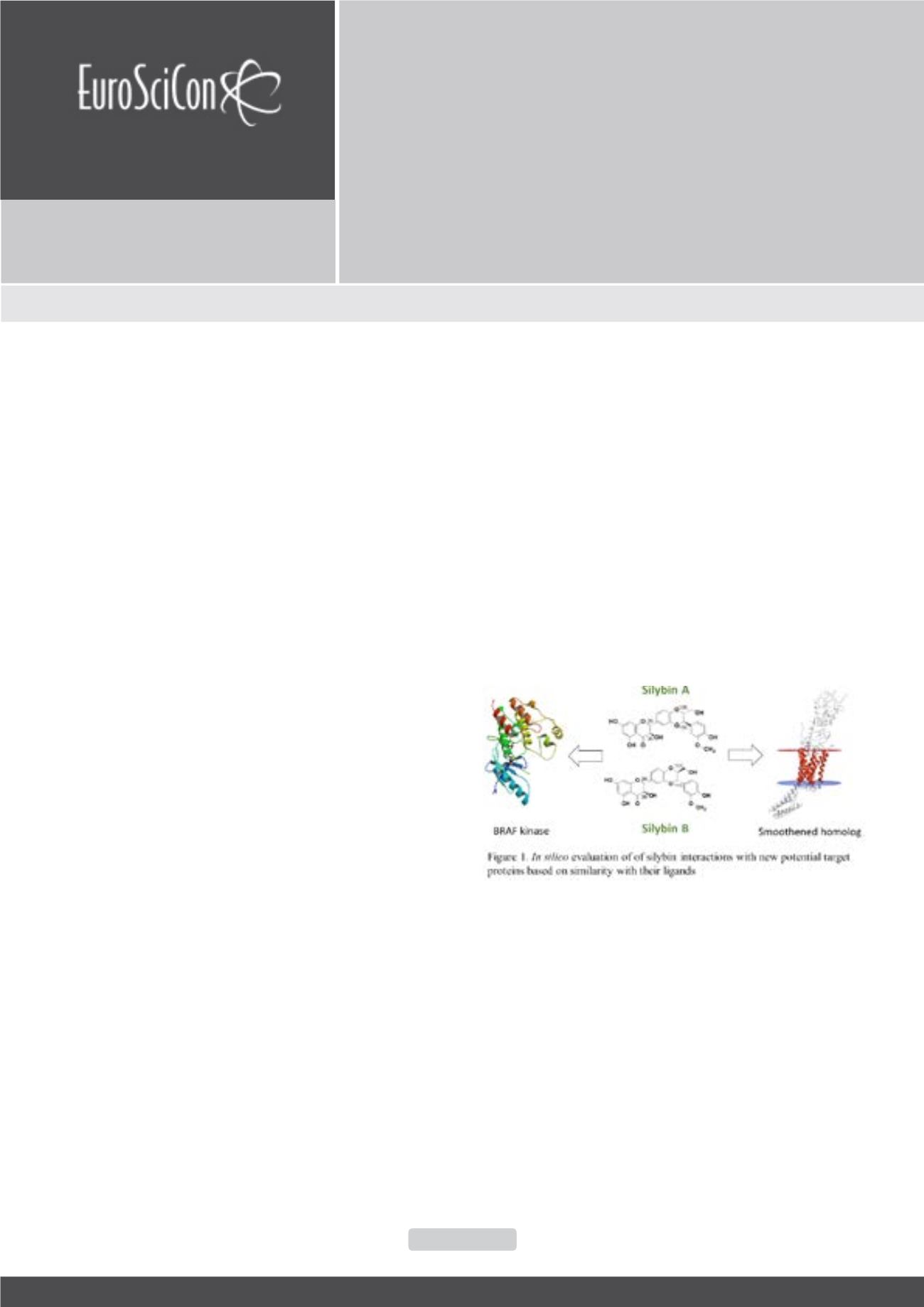

Pharmacognosy 2018
American Journal of Ethnomedicine
ISSN: 2348-9502
Page 79
April 16-17, 2018
Amsterdam, Netherlands
6
th
Edition of International Conference on
Pharmacognosy and
Medicinal Plants
T
he medicinal plant
Silybum marianum
(milk thistle) has been
used from antiquity for treatment of liver and gallbladder
disorders of different etiologies. Its main active component,
silybin, occurs in two diastereoisomeric forms, silybin A and B.
Silybin has been shown to exert a broad spectrum of bioactivities
including cardioprotective, neuroprotective, antidiabetic and
anticancer activities; however, the mechanisms of these actions
have not been elucidated yet. In the current study, we assessed
the chemical similarity of the silybin diastereoisomers to all
approved drugs in the DrugBank database using ROCS software.
Tanimoto Combo index, taking into account features obtained
by shape and chemistry alignment of the compounds, was
used as similarity estimator. The drugs scored with Tanimoto
Combo indices ≥0.9 (9 drugs for silybin A and 9 drugs for silybin
B) were filtered and analyzed in terms of target pathology and
mechanisms of action. Among themthreedrugs exert antidiabetic
(canaglifozin, dapaglifozin, empaglifozin) and two other drugs
possess antitumor activities (vemurafenib and vismodegib).
Since silybins have been reported to possess antitumor activities,
the similarity with these drugs is of а particular interest when
studying their mechanism of action. Since the X-ray structures of
the antitumor drug targets, Smoothened homolog (vismodegib)
and BRAF kinase (vemurafenib) are available, further docking
studies of silybins in these receptors were performed and the
possibility of silybin interactions with them was estimated. The
results suggest that silybins can be accommodated in the binding
sites of BRAF kinase and Smoothened homolog performing
specific interactions with particular residues, including also those
vemurafenib and vismodegib interact with. Experimental studies
are necessary to prove the hypothesis that silybins can act as
inhibitors of these proteins.
Recent Publications
1. DiukendjievaA, Al SharifM, Alov P, PenchevaT, Tsakovska
I, Paeva I (2017) ADME/Tox Properties and Biochemical
interactions of Silybin Congeners:
In Silico
Study. Natural
Product Communications, 12, 2.
Biography
Antonia Diukendjieva got her BS Degree in Biotechnology and MS Degree in
Biochemistry from Sofia University “St. Kliment Ohridski”, Faculty of Biology.
Currently she is a PhD student at the Institute of Biophysics and Biomedical
Engineering, Bulgarian Academy of Sciences. Her main scientific interests
are in the field of Predictive Toxicology and
In Silico
Drug Design. Her most
recent investigations relate to pharmacokinetic and pharmacodynamic
evaluation of naturally-derived flavonoids.
antonia.diukendjieva@biomed.bas.bgIn silico evaluation of new potential target proteins of
flavonolignans from Silybum marianum
Antonia Diukendjieva
1
, Mattia Mori
2
, Petko Alov
1
, Ivanka Tsakovska
1
, Maurizio
Botta
2
and
Ilza Pajeva
1
1
Bulgarian Academy of Sciences, Bulgaria
2
University of Siena, Italy
Antonia Diukendjieva et al., Am J Ethnomed 2018, Volume 5
DOI: 10.21767/2348-9502-C1-006
















